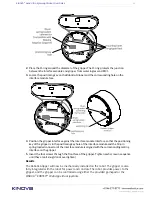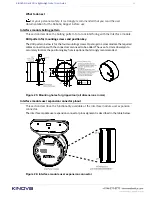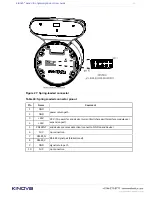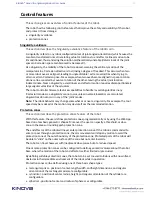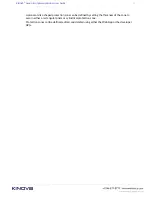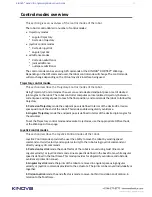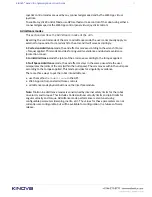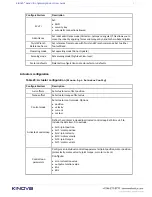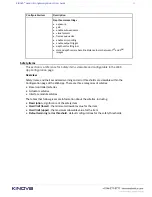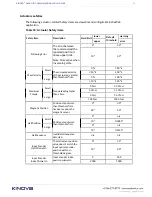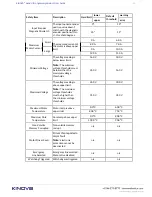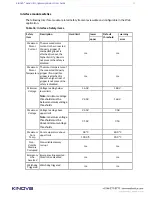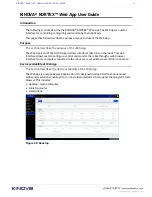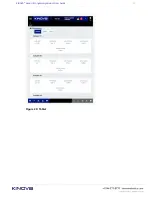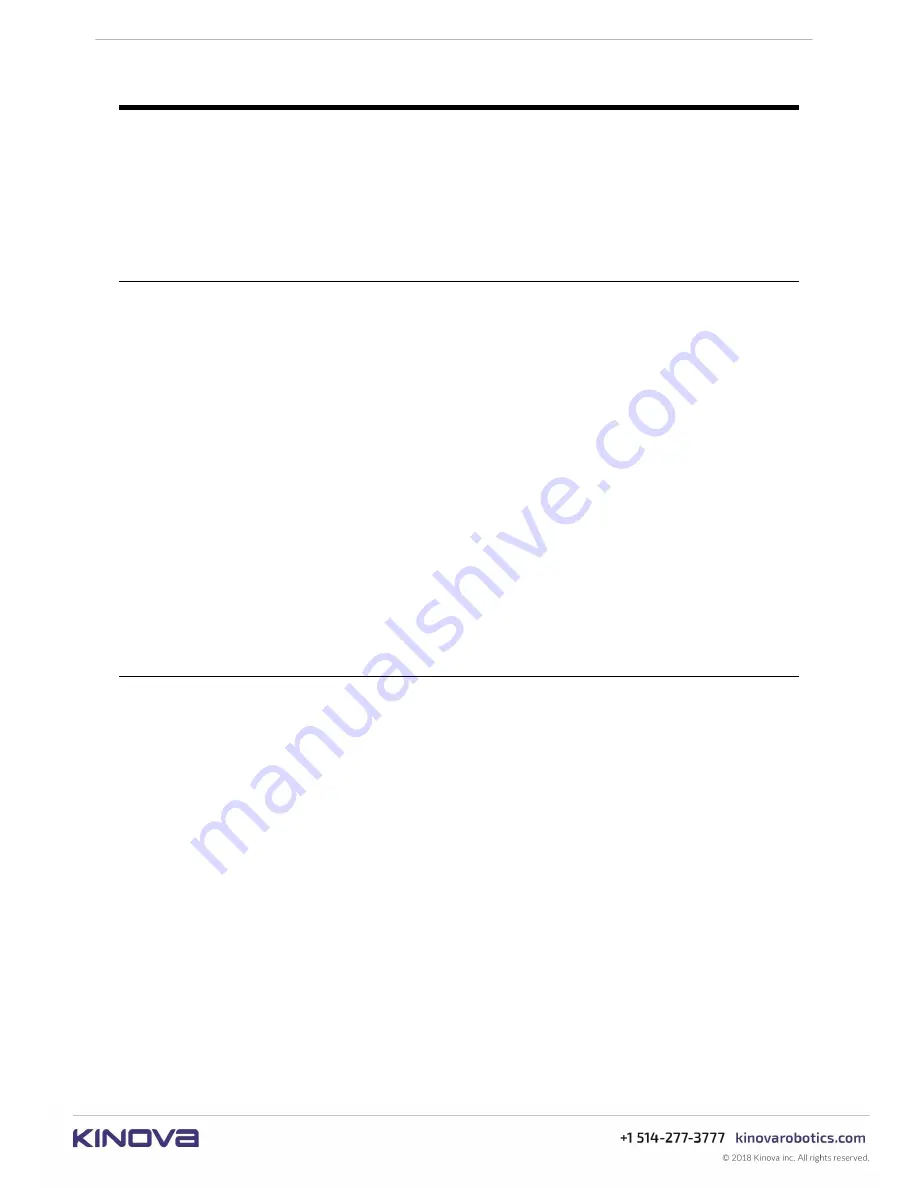
KINOVA
®
Gen3 Ultra lightweight robot
User Guide
76
Control features
This section gives an overview of control features of the robot.
The robot has the following control features that improve the safety and usability of the robot,
and protect it from damage:
• singularity avoidance
• protection zones
Singularity avoidance
This section describes the Singularity avoidance feature of the robotic arm.
A singularity refers to any robot configuration (set of joint angles/orientations) which causes the
Jacobian transformation matrix relating actuator rotations to end effector linear motion to be
ill-conditioned, thus rendering the solution mathematically unstable (determinant of the joint
space to Cartesian space Jacobian matrix becomes 0).
At a singularity, the mobility of the robot is reduced, meaning the arbitrary motion of the
manipulator in a Cartesian direction is lost (losing a degree of freedom). This occurs when two
or more robot axes are aligned, leading to unpredictable / extreme velocities when trying to
attain a certain Cartesian pose. For example, when two axes become aligned in space, rotation
of one can be canceled by counter-rotation of the other, leaving the actual joint location
indeterminate. Near a singularity a small linear end effector motion requires disproportionately
large angular velocities of the actuators.
The robot controller firmware features capabilities to handle / avoid singularities in any
'Cartesian' mode. As a singularity cannot occur unless inverse kinematics are calculated,
singularities do not occur in any of the 'joint' modes.
Note:
The robot behavior may change somewhat at or near a singularity. For example, the tool
speed may be reduced or the motion may deviate from the commanded motion.
Protection zones
This section describes the protection zones feature of the robot.
With this feature, the user defines protection zones programmatically or by using the
Web App
,
based on a few basic geometric shapes. Moreover, the user can specify a threshold, or slow-
zone, in the area surrounding each protection zone.
The end effector of the robot will never enter protection zones. If the robot is commanded to
enter or pass through a protection zone, the arm movement will stop any motion toward the
protection zone at the outer boundary of the protection zone. Protected parts of the robot will
be able to "slide" on the outer surface of the zone but not enter inwards.
The robot can travel however within adjacent slow-zones, but at a reduced speed.
One or more protection zones can be configured to define geometric volumes about the robot
base, where the motion of the robot end effector is either limited or precluded.
By defining suitable protection zones, the robot can be set to avoid collisions with known fixed
obstacles in the immediate environment of the robot while in operation.
Protection zones can be defined using one of three basic shape types:
• rectangular prism - position of center, length, width, and height dimensions, and angular
orientation of the rectangular prism are configurable
• cylindrical - position of center, radius, height, and angular orientation of the cylinder are
configurable.
• spherical - position of center and radius of sphere are configurable

